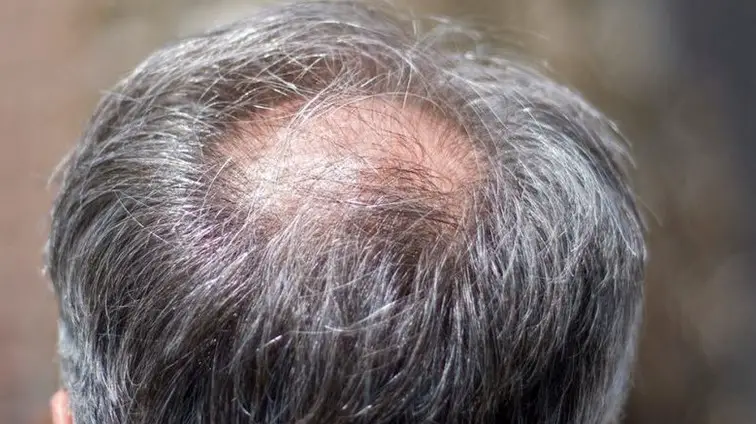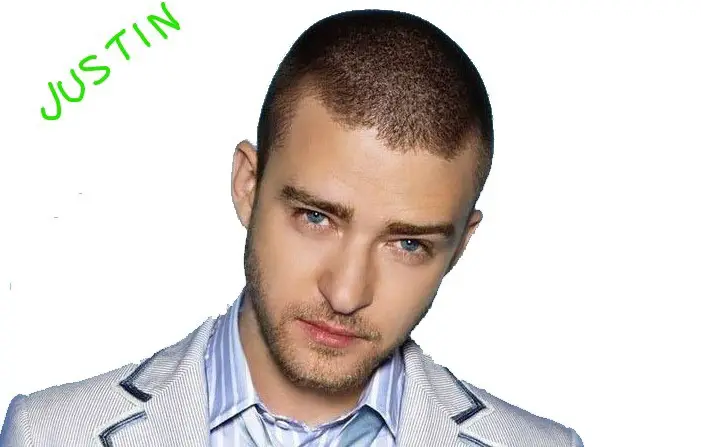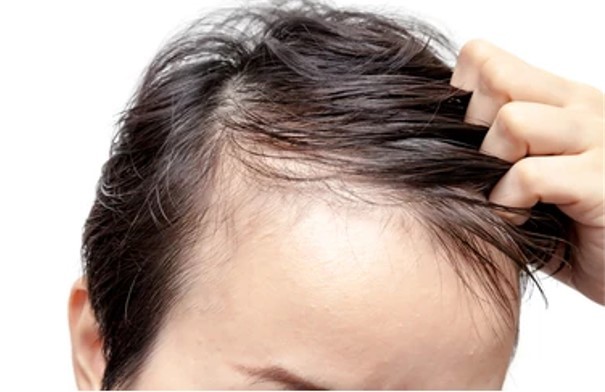Dive into the intricacies of mature hairline, learn how to distinguish it from receding hairlines, and explore treatment options.
Understanding what a mature hairline is can be a game-changer in how men perceive their hair health. Contrary to popular belief, a mature hairline is not an immediate sign of impending baldness, but rather a natural evolution of hairline shape that occurs in most men as they age. This change is often misunderstood, leading many to make hasty decisions about hair treatments that may not be necessary.
Recognizing the importance of understanding a mature hairline can save you both time and money. It can help you differentiate between a natural hairline progression and conditions that may require medical intervention, such as a receding hairline or male pattern baldness. Knowing the difference can guide you in choosing the right treatment options, if any are needed, and prevent unnecessary stress or expenditures on hair restoration methods that might not be effective for your situation.
To delve deeper into this topic and to dispel some common myths, check out our comprehensive guide on Is Mature Hairline Balding?. This article will provide you with all the information you need to make informed decisions about your hair health. Don’t let misconceptions guide you; get the facts and take control of your hair journey today.
Key Takeaways
- Understanding the Mature Hairline: A mature hairline is a natural part of aging and is not the same as balding or a receding hairline.
- Visual Cues: A mature hairline often presents itself with specific visual characteristics that distinguish it from a receding hairline.
- Genetic Factors: Your genes play a significant role in the formation of a mature hairline.
- Medication Options: While a mature hairline is natural, medications like Minoxidil and Finasteride can be used for those who wish to maintain their current hairline.
- Hairstyles: Certain hairstyles can complement a mature hairline and enhance your appearance.
- FAQs: Addressing common questions can help alleviate concerns about mature hairlines.
 What is a Mature Hairline?
What is a Mature Hairline?
When it comes to understanding hair health, the term mature hairline often surfaces, yet its meaning remains elusive for many. In essence, a mature hairline is a natural progression that occurs in the majority of men as they age. Unlike a receding hairline, which is often linked to male pattern baldness, a mature hairline is a benign change that doesn’t necessarily indicate future hair loss. It’s characterized by a slight recession from the juvenile hairline, usually manifesting in the late teens to early twenties. The hairline may move back by about 0.5 to 1.5 inches, forming a more “M” shaped pattern as opposed to the straight-across line commonly seen in younger individuals.
The characteristics of a mature hairline include a more pronounced widow’s peak, less density at the temples, and a generally more “adult” appearance. It’s crucial to note that while these changes may be alarming at first, they are usually a normal part of aging and not a sign of impending baldness. However, it can be challenging to distinguish a mature hairline from the early stages of a receding one, which is why understanding the characteristics is vital.
For those interested in learning more about the nuances of hairline types, our in-depth article on Natural Hairline offers a comprehensive look at the different stages and what they mean for your hair health. Don’t let uncertainty cloud your judgment; arm yourself with the knowledge to make informed decisions about your hair.
What Does a Mature Hairline Look Like?
The appearance of a mature hairline can vary from person to person, but there are some common visual cues that can help you identify it. Unlike a juvenile hairline, which is typically straight across, a mature hairline often forms an “M” or “U” shape, receding slightly at the temples. The density of the hair may also change, becoming less thick at the front while maintaining volume at the crown. These changes are subtle and usually occur gradually, making it essential to know what to look for to distinguish a mature hairline from a receding one.
Examples of a mature hairline often include a more pronounced widow’s peak, a balanced recession at the temples, and a natural, adult-like appearance. These characteristics are not cause for alarm; rather, they are a normal part of the aging process for most men. However, because these changes can be subtle, they are often mistaken for the early signs of a receding hairline, leading to unnecessary concern and sometimes even premature treatment.
If you’re still unsure about the state of your hairline, our comprehensive guide on How to Tell if Your Hairline is Receding can offer more insights. This resource will help you distinguish between a mature and a receding hairline, providing you with the tools to make informed decisions about your hair health. Don’t let ambiguity hold you back; gain the clarity you need to take the right steps for your hair.
Mature Hairline vs Receding Hairline
One of the most common confusions in men’s hair health is distinguishing between a mature hairline and a receding hairline. While both involve changes in the hairline’s position, the key differences lie in the rate of change, the pattern of hair loss, and the associated symptoms. A mature hairline is a natural, non-pathological shift that usually occurs in late adolescence or early adulthood. It involves a slight, balanced recession at the temples and does not progress aggressively. On the other hand, a receding hairline is often a sign of male pattern baldness and can progress more rapidly, leading to more significant hair loss over time.
Understanding these differences is crucial for making informed decisions about hair care and treatment. For instance, a mature hairline rarely requires medical intervention, while a receding hairline might benefit from treatments like Minoxidil or Finasteride.
If you’re concerned about the state of your hairline, our detailed guide on Early Receding Hairline can provide you with valuable insights. This resource will help you identify the early signs of a receding hairline and offer solutions for management. Don’t remain in the dark; enlighten yourself with the knowledge to take proactive steps for your hair health.
Table: Comparison Between Mature and Receding Hairline
| Feature | Mature Hairline | Receding Hairline |
|---|---|---|
| Age of Onset | Late teens to early 20s | Late 20s and beyond |
| Rate of Change | Slow and gradual | Rapid and noticeable |
| Pattern | “M” or “U” shape | Thinning at temples, crown |
| Treatment Needed | Rarely | Often |
| Associated with Baldness | No | Yes |
Causes and Treatment Options for a Mature Hairline
When it comes to the causes of a mature hairline, it’s essential to understand that this is usually a natural, genetic process. Most men will experience some form of hairline maturation as they age, and it’s often inherited from family members. Unlike a receding hairline, which can be influenced by factors like stress, hormones, and lifestyle, a mature hairline is generally considered a benign, non-pathological change that doesn’t necessarily require treatment.
However, for those who are concerned about the aesthetic changes that come with a mature hairline, there are medication options available. Products like Minoxidil and Finasteride can be considered, although they are more commonly used for treating male pattern baldness rather than a mature hairline. It’s crucial to consult with a healthcare provider for a proper diagnosis and treatment plan tailored to your specific needs.
If you’re unsure whether your hairline is maturing or receding, our comprehensive guide on Signs of Receding Hairline can help you make that distinction. This resource will provide you with the tools to identify the early signs of a receding hairline and offer actionable steps for management. Don’t let uncertainty dictate your actions; equip yourself with the knowledge to make the right choices for your hair health.
Table: Medication Options for Hairline Concerns
| Medication | Used For | Effectiveness for Mature Hairline |
|---|---|---|
| Minoxidil | Male Pattern Baldness | Limited |
| Finasteride | Male Pattern Baldness | Limited |
FAQs About Mature Hairline
When it comes to understanding a mature hairline, several questions frequently arise. These questions often revolve around the characteristics, causes, and treatment options for a mature hairline. Below are some of the most commonly asked questions, along with their answers, to help you gain a comprehensive understanding of this topic.
What is a mature hairline?
A mature hairline is a natural shift in the hairline that occurs as men age, usually forming an “M” or “U” shape.
Is a mature hairline a sign of balding?
No, a mature hairline is generally not a sign of balding but rather a natural part of aging.
How can I tell if my hairline is maturing or receding?
A maturing hairline will show a balanced recession at the temples, while a receding hairline will progress more rapidly and may lead to significant hair loss.
Are there treatments for a mature hairline?
While treatments like Minoxidil and Finasteride exist, they are more commonly used for receding hairlines and male pattern baldness.
Does a mature hairline affect women?
While less common, women can also experience changes in their hairline, but it’s usually not referred to as a “mature hairline.”
If you’re particularly concerned about a receding hairline at a young age, our guide on Receding Hairline at 20 can provide you with valuable insights. This resource will help you understand the early signs of a receding hairline and offer actionable steps for management. Don’t let your age be a factor in hair health; get the information you need to take control.
How to Manage a Mature Hairline
Managing a mature hairline doesn’t have to be a stressful experience. In fact, there are various ways to embrace this natural change, and one of the most effective is through your choice of hairstyle. The right haircut can not only complement a mature hairline but also enhance your overall appearance. For instance, a short back and sides with a longer top can work wonders in making a mature hairline less noticeable. Similarly, a buzz cut or a crew cut can also be flattering options. The key is to consult with a skilled barber who can tailor a style that suits your specific hairline and facial features.
For those who have an M-shaped hairline, certain hairstyles can particularly accentuate this unique feature. Styles like the pompadour or a slicked-back look can add volume and draw attention away from the hairline, making it a less prominent feature. It’s all about working with what you have and turning it into an asset.
If you’re curious about how different hairlines can influence your choice of hairstyle, our guide on M-Shaped Hairline offers a deep dive into this specific type of hairline and the best ways to style it. Don’t let your hairline dictate your style; take control and make it work for you.
Table: Hairstyles Suitable for Different Types of Hairlines
| Type of Hairline | Recommended Hairstyles |
|---|---|
| Mature Hairline | Short back and sides, Buzz cut, Crew cut |
| M-Shaped Hairline | Pompadour, Slicked-back look |
Real-life Examples and Testimonials
When it comes to managing a mature hairline, real-life examples and testimonials can offer invaluable insights. Hearing from individuals who have successfully navigated this natural change can provide both inspiration and practical advice. For instance, Mark, a 35-year-old graphic designer, embraced his mature hairline by opting for a buzz cut. He found that this style not only complemented his mature hairline but also gave him a more youthful appearance. Similarly, Sarah, a hairstylist, shares that many of her male clients have successfully transitioned to hairstyles that suit a mature hairline, such as the crew cut or the pompadour.
Another compelling story comes from Alex, who was initially concerned about his uneven hairline. After consulting with a dermatologist and a hairstylist, he decided to use Minoxidil to maintain his existing hair while adopting a new hairstyle that made his mature hairline less noticeable. These stories underscore the importance of seeking professional advice and being open to change.
If you’re dealing with an uneven hairline and are looking for more personalized solutions, our comprehensive guide on Uneven Hairlines can provide you with the information you need to make informed decisions. Don’t let an uneven or mature hairline hold you back; explore your options and find the right solution for you.
Table: Real-life Examples and Their Approaches
| Name | Age | Approach to Managing Mature Hairline |
|---|---|---|
| Mark | 35 | Buzz cut |
| Sarah | 28 | Crew cut, Pompadour |
| Alex | 32 | Minoxidil, New hairstyle |
Conclusion
In the journey to understand and manage a mature hairline, knowledge is undoubtedly power. This comprehensive guide has aimed to equip readers with the essential information they need to navigate this natural change in their hairline. From understanding what a mature hairline is and how it differs from a receding hairline, to exploring various treatment options and hairstyles that can complement this change, the article has covered it all. Real-life examples and testimonials have added a layer of relatability and practicality, showing that a mature hairline is not something to fear but rather an aspect of oneself that can be embraced or managed effectively.
For those who are still unsure about the differences between various types of hairlines, including a widow’s peak, our detailed article on Widow’s Peak vs Receding Hairline can offer further clarity. Don’t let uncertainty keep you from making informed decisions about your hairline; arm yourself with knowledge and take control.
Table: Summary of Key Takeaways
| Topic | Key Takeaway |
|---|---|
| What is a Mature Hairline? | A natural progression that occurs in most men as they age. |
| Mature vs Receding Hairline | Different patterns and progression rates. |
| Treatment Options | Minoxidil, Finasteride, and specific hairstyles can manage a mature hairline. |
| Real-life Examples & Testimonials | Personal stories offer practical insights into managing a mature hairline. |
Additional Resources
The journey to understanding and managing a mature hairline doesn’t have to end here. There are numerous other resources that can provide further insights and solutions for those looking to delve deeper into this topic. Whether you’re interested in scientific studies, personal experiences, or product recommendations, the following list has something for everyone.
Recommended Articles and Products
- Low-Level Laser Light Therapy for Hair Loss
- LLLT Before and After
- Balding Crown Treatment
- Understanding the Norwood 3 Vertex Stage
References for Further Reading
- Study on Hair Loss Treatment
- NCBI Book on Hair Loss
- Research on Hair Loss in Men and Women
- New Approaches to Combat Hair Loss
- PubMed Study on Hair Loss
- Research on Hair Loss Treatment
Don’t just stop at understanding your mature hairline; take the next step and explore these valuable resources. Your hairline will thank you.
- AI Powered Bald Filter Online 2024: See Yourself with No Hair! - January 19, 2024
- Harklinikken Bad Reviews 2024: Analyzing Negative Feedbacks - January 18, 2024
- How to Get the Alex Eubank Hair | Step-By-Step Tutorial 2024 - January 18, 2024
 What is a Mature Hairline?
What is a Mature Hairline?









